How to Plan a Successful Personalization Strategy: The Essentials
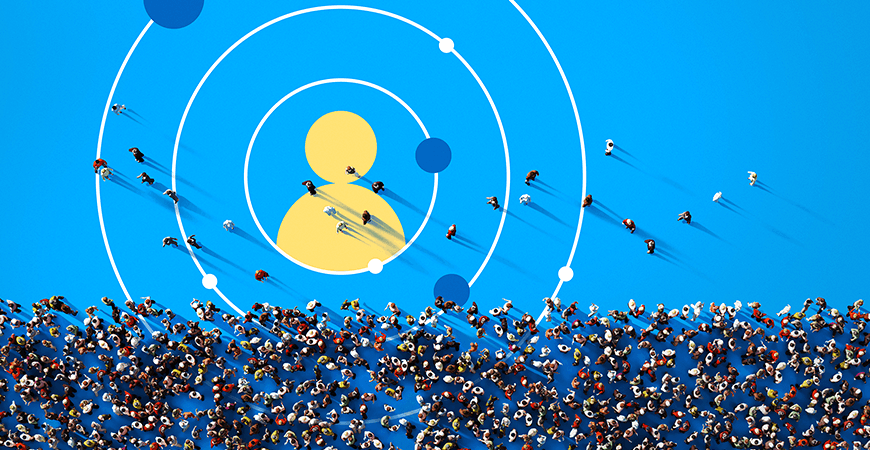
All personalization strategies are alike when they succeed. The ones that fail, fail their own way. Putting "personalized" and "alike" in the same sentence may sound ironic, but in this blog post we look at one thing all successful personalization strategies have in common. That's right, a plan.
Personalization is everywhere around us and it is positively not a novelty or luxury anymore—any business that needs to sustainably connect with their customers and therefore positively affect the bottom line, needs a proper personalization strategy.
Devising a personalization strategy may sound like a gargantuan effort, especially when starting from scratch. Even though personalization does not work with the push of a button, there certainly is a method to the madness. Following a few simple and straightforward guidelines will help you launch a sound and actionable personalization strategy.
The goal is to concentrate on personalization campaigns that are data-driven, target the proper audiences, generate brand loyalty, increase engagement and conversions, and can be applied to any extra channel or medium. Then you measure, optimize, and repeat.
“Tactics without strategy is the noise before defeat”
—Sun Tzu
Personalization Starts with Data
When Big Data was just a buzzword, organizations were struggling to collect large amounts of data, store it, and then amass more data—across systems, platforms, and mediums. Only to find out using it properly becomes a challenge.
Nowadays, companies have so much information about their prospects and customers that data potential seems infinite. Capturing data at key points in the customer journey still means everything. The tricky part is how you use it. Essentially, how do you use data to gain knowledge about what drives the customer and what does not, and how do you acquire holistic customer intelligence? How do you use this data to personalize experiences to drive meaningful engagement and improve relationships?
Personalization starts with data. Personalization, in other words, is about knowing your customers and using that knowledge to solve their problems, make their experiences smoother and better, and meet their needs and expectations.
The Power of Data
Quantity does not equate to quality. Even less so when you require the right set of data from a diverse set of relevant and interconnected systems that encompass your visitors’ interaction touchpoints. But delivering a data-driven customer experience doesn’t happen overnight. To engage on a personal level, you need to start listening, learning, and leveraging the insights you obtain. It is not a one-time process and requires iteration, as well as evaluation and planning.
It is also important to remember that technology alone won’t get you to true 1:1 personalized marketing. Technology fills in the blanks and provides the data. That's where you come in to interpret the data into insights and come up with a plan.
Firstly, you need to take a careful look at what data you already have, what data you need, what are the sources of your data, and how do you centralize it all. And remember it is not just about storing and handling lots of data. The challenge marketers have is harnessing the right data from these siloed systems and touchpoints into unified profiles to understand their users and, with the right technology and mindset in hand, serve their customers something meaningful and personal.
Each forward-thinking company should first center their efforts around understanding as much as possible about their individual prospects and customers and their unique needs, and only then design the experience and produce the content to engage them on a personal level.
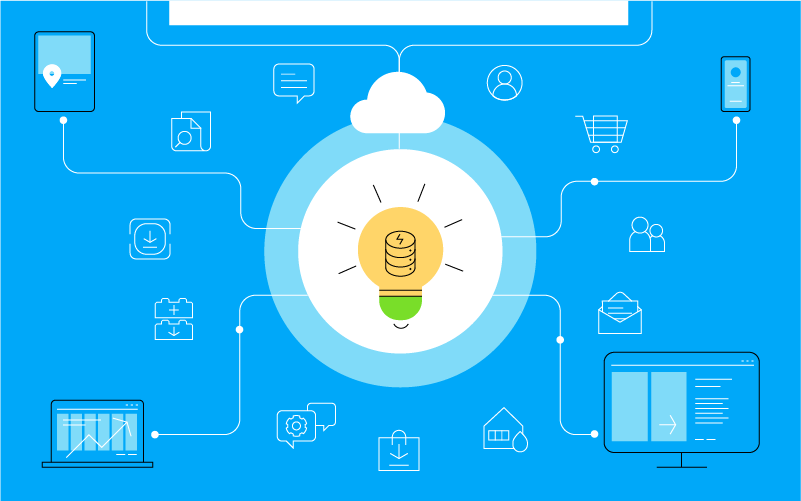
With the right data, you discover and target the right audiences, make informed decisions, design better experiences, and drive your business forward.
To acquire this one-on-one customer relationships that last longer and are rewarded with higher conversion rates, you need deep understanding of the people behind the numbers—that is, consumers’ digital profiles and identity. Organizations need to take the next step beyond anonymous visitor data, stored in silos, and properly organize and leverage the obtained information to map demographic, behavioral and context-rich awareness of the needs and interests that power personalized, relevant offers and experiences.
Data, Segmentation, and Personalization
Engagement, ultimately, should be the result of having a meaningful and personal conversation with somebody. But how do you know who you are talking to and why? And how do you make it personal? What if you have a million users—do you need to develop a million journeys for each and every one of them? You simply can’t configure and manage millions of experiences. And the sad truth is that there is not an archetypal user. So how do you balance out the one-size-fits-all versus the strictly individual?
The key to providing such unique experiences in a viable and sustainable way is to group or segment your audiences around certain criteria that clusters their characteristics into groups having something in common.
This grouping needs to make sense to your business, marketing funnel, and sales cycle. Segments need to be identified and prioritized by their ability to drive business value and their size. You group and divide your audience based on specific characteristics, so that you can target the different types of visitors with tailored and relevant content. You can personalize experiences for anonymous and new visitors, returning visitors, leads, prospects, customers, marketers, developers or any other way you define your audience. Each segment or group represents an established market and an audience with their own specific needs that you can address.
Essentially, segmentation brings marketers closer to one-to-one marketing, or hyper-personalizing content for each persona. By grouping audiences together, segmentation makes personalization more manageable and allows marketers to differentiate between the behaviors and intent of visitor groups. They can then concentrate on marketing analysis, testing, optimization and personalization to positively affect the bottom line, instead of working with meaningless numbers and statistics. Simply put, segmentation lets you target your market in smaller, bite-sized chunks that allow marketers to see what and who is driving the result and act accordingly.
There is an undeniable connection between data, segmentation and personalization. Once you have a solid understanding of our audience segments characteristics, getting personalization right is much easier.
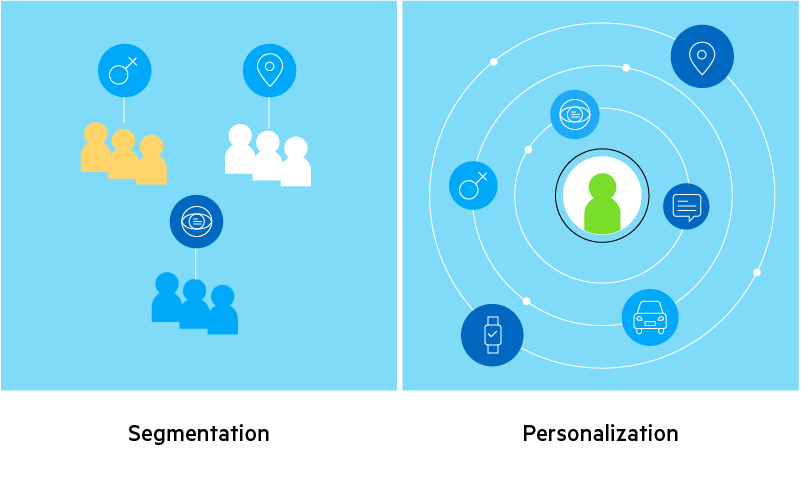
How to Segment Audiences
The key to both segmenting and personalizing experiences is having robust and actionable customer data, collected throughout the customer journey. You can track what pages visitors hit, where they come from, what kind of assets they are interested in, clicks, path, and activities over time. Additionally, you collect visitor attributes such as social graph data, data about registered users, preferences and interactions to understand the visitor’s journey and context better.
The more efficiently you combine this rich set of data with market research, information about current customers, and business intelligence, the better you can segment and personalize experiences based on that data. And, once you’ve collected enough valuable data (this depends on your sales cycle), you can start analyzing it, looking for patterns and correlations between characteristics and audience groups. You group visitors by common interests, readiness to buy, traffic sources, demographic, behavioral, contextual, and psychographic attributes and needs and events.
Real-time, one-to-one personalization can only be achieved if you have enough data, and if you know who your audience is and what your most valuable segments are. Only then can you personalize individual journeys, tailor messages, and provide value.
By combining the following key segmentation methods and scoring models to group user characteristics, you understand the context of the visitor.
-
Customer Journey
The customer journey connects and maps all touchpoints and interactions (whether they are visits, clicks, calls or website activity) and provides a unified overview and understanding of website visitors’ actions and behaviors.
Collecting a reasonable amount of data along the customer journey allows you to define personas. Personas are the most popular type of segment—a fictional, yet data-driven representation of your ideal customer. Personas bring the segments to life and mimic a real customer or prospect. You associate a persona not just to a segment but to specific behaviors, attitudes, motivations and values. -
Sales Funnel
The sales funnel depends on the sales model and defines who your most prospective contacts are from a sales point of view. Similar to the customer journey, collected data allows you to devise a lead scoring model that helps you identify a visitor as a prospect, opportunity or qualified lead.
By doing this, you can target each segment separately with marketing that’s tailored to appeal to that particular group. And you can use the characteristics they have in common to create a relevant message and targeting strategies.
Customer Journey and Touchpoints
It may be difficult to navigate the ocean of big data coming from web, mobile, social, email, wearables, and in-person channels, but only the aggregation of said data can bring you closer to a 360-degree customer understanding and experience. As a consumer yourself, you most probably go through extensive research and comparison phases when planning the purchase of a product, service, or experience—various online and offline resources, downloadable assets, reviews, videos. And you do all these via several channels and devices—driven by both emotion and reason.
Throughout these phases, marketers need to go beyond personas and segments and understand the time and context of their audience, and know them well if they want to appeal, inspire, and influence them. On top of that, they need to enable them to feel empowered to make personalized decisions based on their own preferences, attitudes, and needs.
With your segments and personas in place, it’s time to map out the customer journey. The journey represents each and every significant interaction your prospects and customers have with your brand from the users’ perspective, as opposed to the sales funnel.
The visual representation of this experience, or the customer journey map, illustrates each persona’s experiences and key interactions, along with context of their behavior, needs, goals, buying intent, and expectations. A key interaction would be any activity occurring in key touchpoints that may lead the users down the sales funnel and that provides an opportunity to influence their experience and behavior.
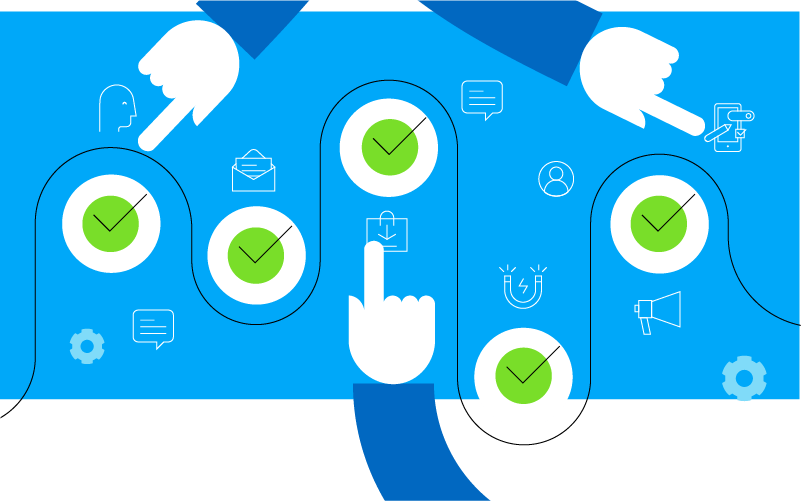
You may need to adapt or extend your customer journeys to suit your industry specifics and identify the journey stages across channels. You need to map the journey for each persona across each channel, so that you have a proper understanding of how channels overlap and intertwine. Only then can you deliver a personalized experience that can engage users regardless of the channel they use. As a result, you get a clear picture of how your brand needs to communicate with your customers at each stage in their journey, across all touchpoints and all marketing channels.
Once you analyze your own data, along with industry data and research, you can understand how your audience engages and shops for your product and service and are able to fill in any gaps along the way. You no longer see personalization as a series of disconnected moments for the user but a seamless and continuous journey begins to take shape instead. This, essentially, is understanding the customer journey and the end-to-end experience—the story and human narrative emerge from your data. With the right and actionable data, marketers can understand what resonates and drives behaviors.
How Do You Make Personalization Work?
Your personalization strategy should be deeply ingrained into all your marketing and sales funnels. That means producing content purposely targeted for different personas, media and individuals. Always keep in mind that you are not just upgrading the functionality or layout of your website. You are building a new and improved way to engage with your prospects and customers across the scope, giving them experiences that are tailored for them throughout their journey.
What is important to keep in mind when devising a personalization strategy is not to focus only on product and business or to personalize a CTA just because you can. Instead, begin with the customer—their context, personality, actions that bring value, and needs. Only then should you curate tailored messages and incentives for the customer and deploy the experiences across channels in a seamless way to deliver value.
The Why
Start with defining what challenges and opportunities you are facing and how you want to address them with your personalization campaigns. Set your goals and align them with overall business objectives. Do you want to improve engagement by driving repeat purchases, or reducing the bounce rate, or boosting the awareness of your product through success stories? Do you want to improve the ROI of a specific campaign by increasing retention?
Goals will vary across industries, businesses, and audiences. Once you set your general objectives, you need to tie them to measurable goals and KPIs, such as increase conversions by 20% over the next quarter.
The Who
The very next question you need to answer is who you are personalizing the experience for—that is, who your prospects and customers are. That is a deceptively simple question that often does not get enough attention, nor is it given the due diligence it deserves.
The paramount challenge is that you may not know exactly who your primary audience is (or, as is often the case, you think you know but your assumptions aren’t as accurate as you’d like to think). That is where data, segmentation, and profiling step in. What types of people do you want to speak differently to? Prospects and customers? Loyal shoppers and first-time visitors? Visitors from target accounts or target industries? Visitors with different demographics or locations? Think through who your visitors are and what meaningful differences exist between them. Then think about the differences between individuals and their preferences and goals and how they would respond to your tailored messaging.
The Where
As visitors are interacting with your organization via ever more channels and touchpoints, their journey, accordingly, becomes longer and more multifaceted. They may choose to communicate with you via your website, your mobile app, emails, newsletters, chatbots, and so on—all happening per the visitor’s discretion and timeline.
Naturally, what was once considered a worthwhile interaction has also expanded in scope and you have to adapt. You need to carefully examine all journeys and channels and touchpoints, so that you plan accordingly where to leverage personalization—the channels via which you interact and communicate with your prospects and customers. Deciding which aspects of the buyer’s experience you’d like to personalize will help you get on the right track going forward.
The How
Once you decide on the channels to personalize, you pinpoint the key points of interaction and figure out what is it that you want to say and how to deliver it to achieve the best results. Do you want to recommend related products or promote a certain service? Or provide specialized information to an audience in a specific location to encourage them to register for an event?
Based on your personalization goals and scenarios, you may choose to personalize the entire page, sets of pages, or a part of a page. Depending on your business, audience, and goal, you may want to personalize a homepage, category page, blog page, nurture or promotion mails, CTAs, provided content, landing page, greeting text, related categories, and so on. The best ingredients of a successful digital experience are strong, reusable and shareable content pieces. Therefore, separation of presentation from content is one of the best practices, so that you can reuse the content pieces across pages, CTAs, channels and segments—as well as across platforms and devices.
Since a prospect can abandon your product page or shopping cart, or cut the journey with your company at any time, you need to make sure you use the collected user’s context, past behaviors, and actions along the journey to help recommend more items of potential interest and broaden their discovery. Depending on how much data is available about a user, marketers can bring in different personalization tactics to build a connection and engage their prospects.
Measure, Analyze, and Optimize
Personalization is essentially a process of optimizing a customer’s experience and it is crucial to be able to effectively measure outcomes and to compare results with historical data. Else there is no way to know whether your investment is paying off. The ultimate goal is to understand:
- What works
- What doesn’t work
- How to improve performance
“If you can’t measure it, you can’t improve it.”
—Lord Kelvin
Pretty much every marketing metric can benefit from personalization—conversion rates, bounce rates, cost per acquisition, improved lead generation, average order value, repeat purchases, customer lifetime value, and so on. Whatever metrics you employ and care about, based on your business goals, industry specifics, and customer journey, make sure you are well aware of the following key points:
Define Appropriate Conversions
Visitor journeys are consistently getting longer and more complex, and they’re also increasingly happening on the visitor’s own timeline. As a result, what is viewed as a meaningful conversion has shifted. It may include registering on the website, downloading certain files/interacting with other assets, requesting information, joining a community, registering for a demo—you get the idea.
Conversions, when properly defined, provide one of the most important metrics on the effectiveness of your personalization efforts and the level of engagement of your audience. In most cases, conversions (a.k.a. goals) can be viewed as meaningful steps in your visitors’ journeys that you would expect to lead to a commercial event. This event may or may not happen on the website—it may not even be “commercial” in the simple sense of the word. It’s simply an event that drives your business forward and makes all other metrics measurable and meaningful.
Avoid Vanity Metrics
You need to make sure that you select and measure meaningful and actionable metrics that help you understand your performance, so that you can improve your future strategy. On the other hand, vanity metrics are metrics that are worthless in terms of providing decision-making value. They may make a website or campaign look good but do not provide insight about the state of your business and how it makes a profit.
Some examples include Facebook fans, search impressions, page views, open rates, followers. Metrics that you can map and follow instead are active users, engagement rate, bounce rate and shares, CTR, competitor followers, and so on. These metrics provide data that is meaningful and will drive business results and growth.
Have a Benchmark
Regardless of what metrics are important to you based on your company’s objectives, you need to establish baseline values against which to measure success, deviations, and progress, otherwise you will just have numbers without context.
You can do this by looking at your current and historical analytics and metrics performance, or you can compare results before and after you implemented personalization initiatives. You can also look at performance of other campaigns or initiatives within your portfolio or check the trends within your industry. Goals that you develop based on baseline metrics will help you set a more realistic expectation of your marketing plan and results for your sales team.
Having a starting point will help you have a good overview of what personalization did for your business.
Optimization is Key
Optimization is the process of continually improving your website, landing page, or overall journey’s capacity to convert visitors into leads or customers. The optimization process never stops—you take a step back, analyze your results and go two steps forward with the help of data, hypothesis, and experimentation and more data to improve conversion rates—the so-called CRO (Conversion Rate Optimization). Data-driven experimentation helps you make informed key decisions about how to proceed with your marketing strategy and can help you:
- Understand your audience better
- Increase leads and/or sales
- Identify your main competitors
- Lower your cost per lead
- Get more incremental business returns
- Get an SEO boost
- Improve brand perception and loyalty and increase engagement
- Increase customer lifetime value
“Our success at Amazon is a function of how many experiments we do per year, per month, per week, per day.”
—Jeff Bezos
Typically, experimentation takes the shape of an A/B test, which means testing two versions of an asset by changing just one variable. There are, however, numerous other methods to improve your conversion rates, which we will discuss in another blog post:
- Call to action (CTA)
Tell your customers exactly what you want them to do with a relevant, attention-grabbing CTA. - Landing pages and forms
Capture information from leads, so you can deliver them tailored messages via the website, email and other channels. - Conversion funnel
Build your own conversion funnel based on target audience behaviors and touch points. - Multivariate testing (MVT)
Test multiple versions of the same asset, such as a landing page, by adjusting multiple variables. - SEO
Improve your search engine rankings to ensure prospects can find your website, products, and services. - Usability
Improve user experience (UX) by making your site or app as easy to navigate as possible, no matter what device your customer uses.
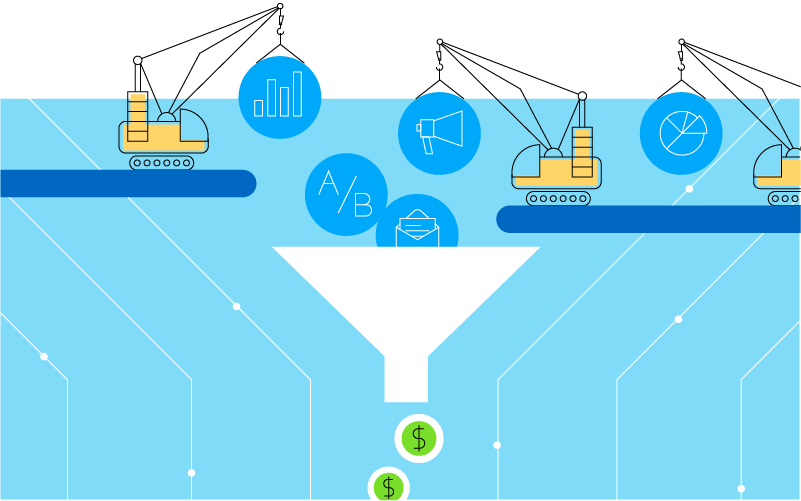
Personalization is a hypothesis until it is tested and validated. Your assumptions about your best audience segments, and the best messaging for those segments, are assumptions until the guesswork is taken away and you are able to make data-driven decisions as you carry out your strategy. You need a structured process to understand which insights are valid for your target audience and act upon them to create growth for your business.
Without a process in place to prove your personalization hypotheses, you will end up wasting time and resources sending the wrong messages to the wrong audience segments.
Make it Personal with Sitefinity
Personalized experiences across all channels are key. Sitefinity is the platform that helps you:
- Make the best use of the valuable data you collect
- Get deep and valuable insights into who your target customers are
- Consistently leverage A/B testing and implement improvements
- Translate visitor insights into the highly personalized experiences your prospects and customers deserve and expect
Understand your customer, design the messaging, tailor the experience and deliver value across all channels, segments and devices—from a single platform.
How do you make personalization work in your organization? Make it count and deliver seamless, personalized experiences across the business. Learn how with Sitefinity Insight.
In the next post in this series, we'll look into the biggest challenges facing personalization in 2020. Stay tuned to find out more.

Petra Lazarova
Petra Lazarova was part of the Sitefinity Product Marketing team.
